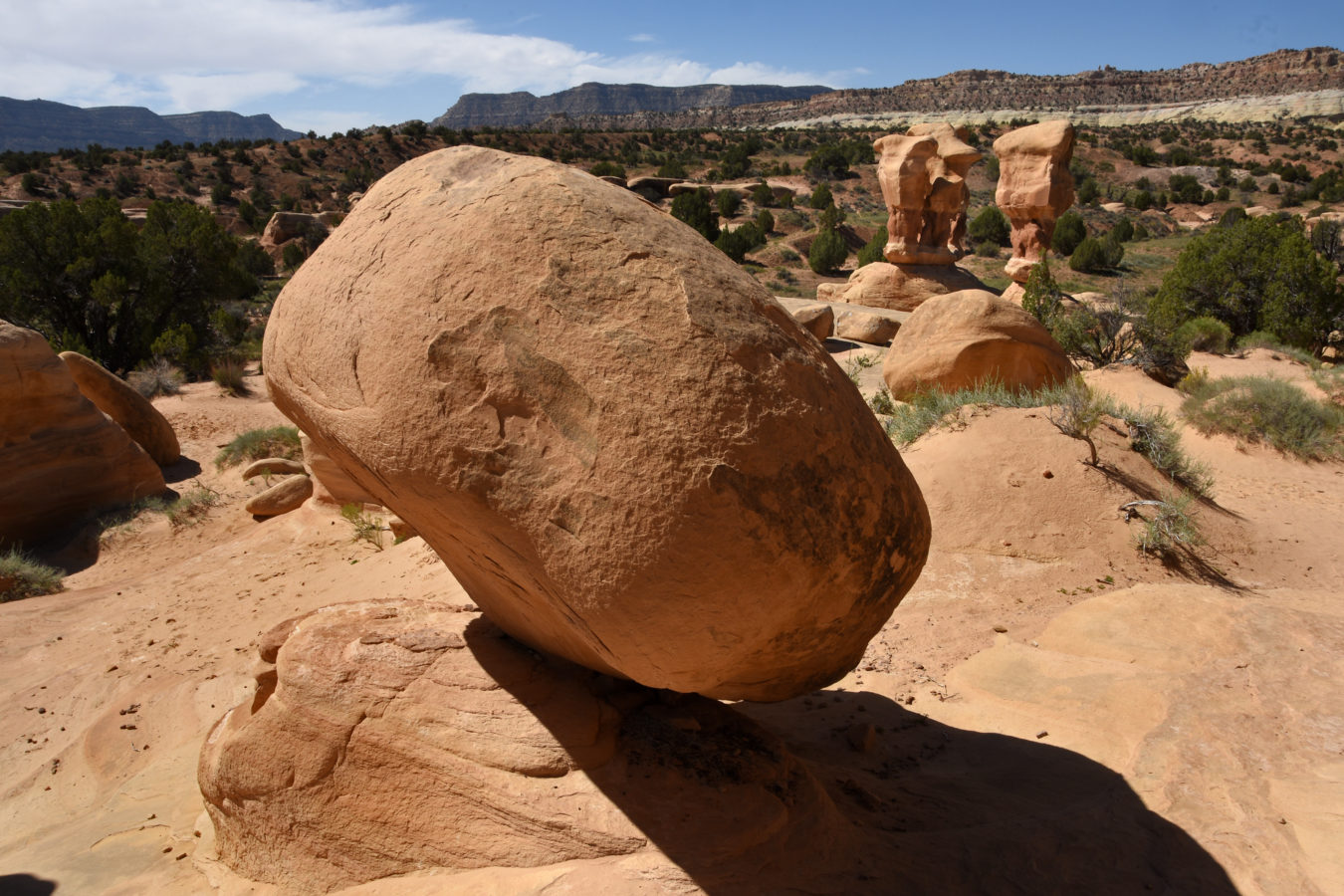Walls of red, walls of gold. Stratified hillsides exposing 270 million years of Earth formation with ribbons of cocoa, caramel, burned orange, and white. Hoodoo rock formations playing tricks on our minds as massive boulders appear to teeter atop eroded, pencil-thin spires. We walked under natural arches that gloriously framed the desertscape. Petrified wood shimmered like quartz.

All photos by Derrick Z. Jackson.
Most dramatic of all was a walk into a slot canyon just a quarter mile from the road. Brilliant sunshine dimmed into filtered strands and made the walls glow crimson and magenta. My wife, Michelle Holmes, and our dog Nila went ahead while I stayed behind to photograph them as tiny dots putting the scale of towering walls into perspective. For a few precious moments on this day in September, it was just us in the canyon, bathing in the silence and the saturated redness, with a crown of orange at the top as the sunlight snaked in far above.

Back in our car, driving between towering red cliffs on both sides of us, we reflected on how sights like these could cease to be accessible with the stroke of a presidential pen.
We were visiting Grand Staircase-Escalante National Monument. It was established 25 years ago by President Clinton. In his official proclamation, Clinton said its 2,900 square miles in southern Utah bordering Bryce Canyon National Park, contained the last region to be mapped in the continental United States.
Unlike a national park, which must be created by Congress, areas every bit as beautiful or valuable for their geology or troves attesting to ancient human movement can be protected by US presidents under the 1906 Antiquities Act. Hailing Grand Staircase-Escalante’s Indigenous cultural sites and art, dinosaur fossils, bizarrely spectacular natural architecture, and some of the richest flora in the arid West between the Rockies and the Sierra Nevada, Clinton said the area was important enough to protect from widescale mining.
“Mining is important to our national economy and to our national security,” Clinton said. “But we can’t have mines everywhere, and we shouldn’t have mines that threaten our national treasures.”
Twenty years, later, President Obama, citing 2,100 square miles of similar abutting wonders needing protection, created Bears Ears National Monument which shares part of its border with Canyonlands National Park.
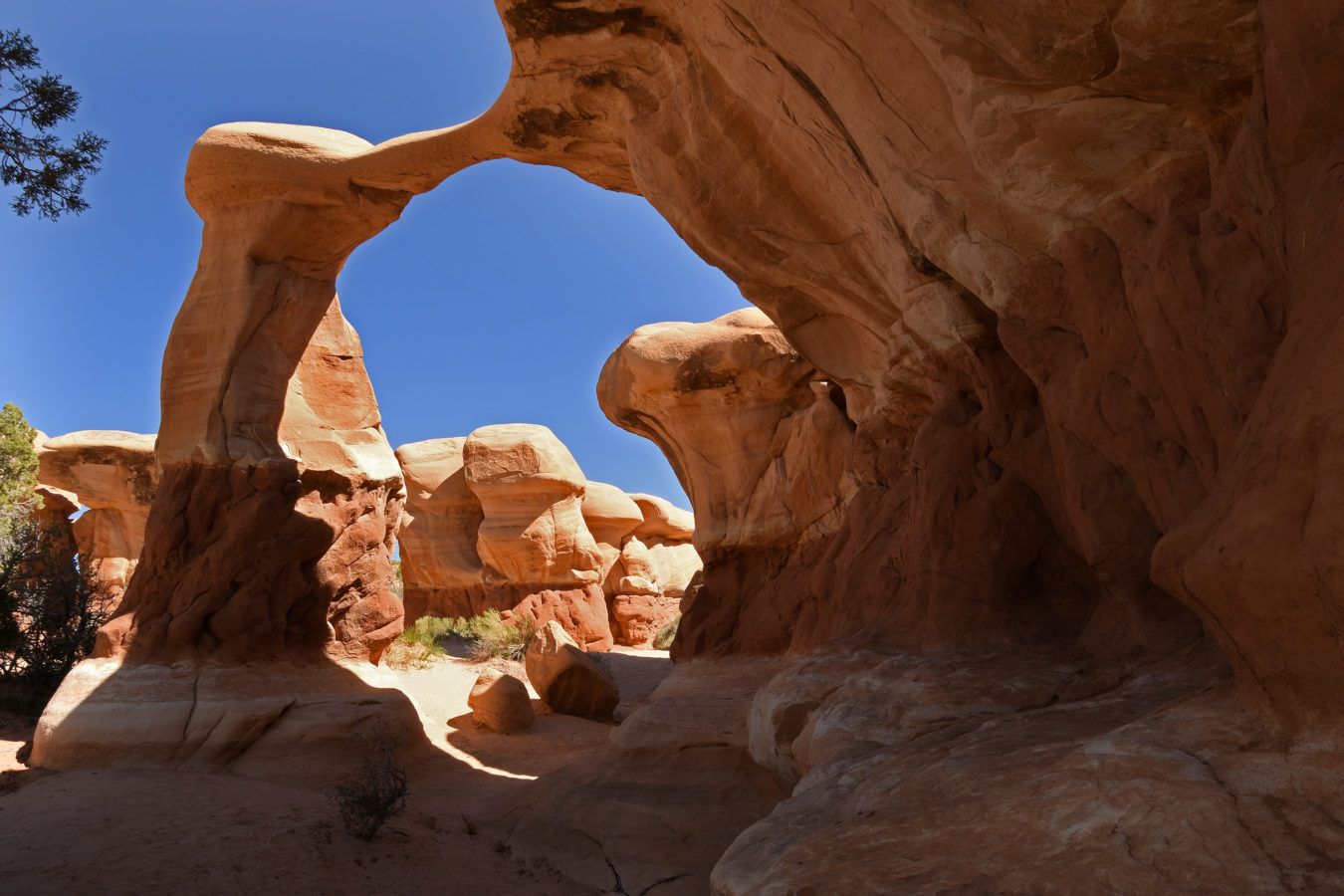
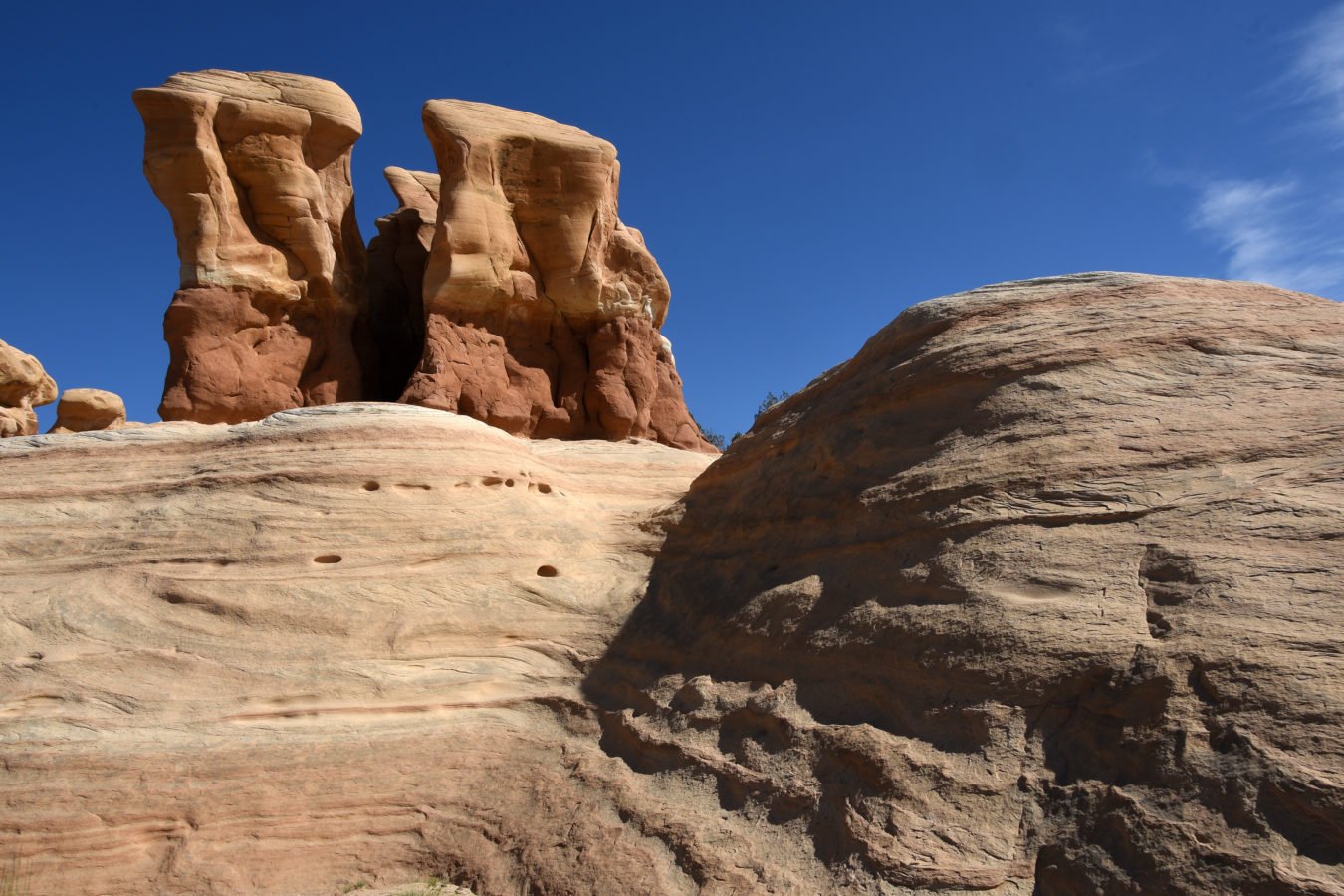
Jettisoned for Unwanted Coal
Then along came a president who promised mines and wells everywhere for coal, oil, and gas. In a wholesale assault on federal water and air regulations and wilderness and wildlife protections, and thumbing his nose at climate science saying the planet must drastically cut fossil fuel burning to avoid catastrophic planetary warming, President Trump slashed the area of Bears Ears by 85 percent and Grand Staircase-Escalante by nearly half in December of 2017. Internal emails obtained by the New York Times connected the decision on Grand Staircase-Escalante to estimates of billions of tons of coal under the rocks—despite strong words from some mining analysts that the monument was no place to pin the hopes of the fossil fuel industry.
Donovan Symonds, a former president of the Coal Preparation Society of America and a retired mining consultant, called coal mining in Grand Staircase-Escalante “economic folly” in a 2017 op-ed in the Salt Lake Tribune. Citing the remote distance of the monument from railways and ports, the sharp decline in coal for domestic power plants and cheaper coal for the export market being mined in Australia, Indonesia and South Africa, Symonds wrote: “Utah coal cannot compete in this market to any meaningful degree and certainly not enough to invest in expensive infrastructure and new mine facilities.”
Under the Trump administration’s policy of deliberately ignoring the incidental “co-benefits” of pollution controls to human health and the landscape, the White House never factored in the monument’s economic value as an undisturbed treasure. According to an analysis by Headwaters Economics, an independent, non-profit land-management research group, recreational dollars are hugely responsible for a major rise in jobs and personal income in the Grand Staircase-Escalante region. Before the near-halving of the monument, the number of visitors had risen from 613,000 in 2005 to 982,993 by 2017.
Between 2008 and 2015 alone, the percentage of jobs in the region tied to travel and tourism had risen from 37 percent to 44 percent. A study last year in the journal Science Advances found that national monuments in the Mountain West were a net economic positive in local economies, “creating a new set of economic forces oriented around the historic, cultural, and scenic amenities these public lands provide.”
Almost as if there were a collective effort to appreciate the treasure, visitations to Grand Staircase-Escalante spiked 18 percent, to nearly 1.2 million visitors in 2018 after the Trump cuts. Three years later, my wife and I were out in Utah as part of that wave, amplified by people getting back outdoors after the worst of the COVID pandemic.
Even though school was back in session across the nation, in our travels we found we had to get into Arches National Park by 7:30 am or so, or risk being locked out for hours. Visitor centers at Capitol Reef National Park and Canyonlands National Park were similarly mobbed. Short trails near parking lots were as full as a downtown sidewalk. While that of course raises important questions of the impact of feet, hands, vandalism, car emissions, and trash, those problems are preferable to hillsides scarred and gouged forever by coal mining.
As beautiful as those parks are, the far more primitive Grand Staircase Escalante was the gem for us. Perhaps precisely because it is not officially a national park, there were virtually no services once you leave the main road. We had a hike around the hoodoos where we were the only people visible for many minutes at a time. I could hear the skitter of a lizard at my feet. We could see through the arches to the horizons. We drove roads where for many moments, the only movements were those of hawks patrolling the scrublands.
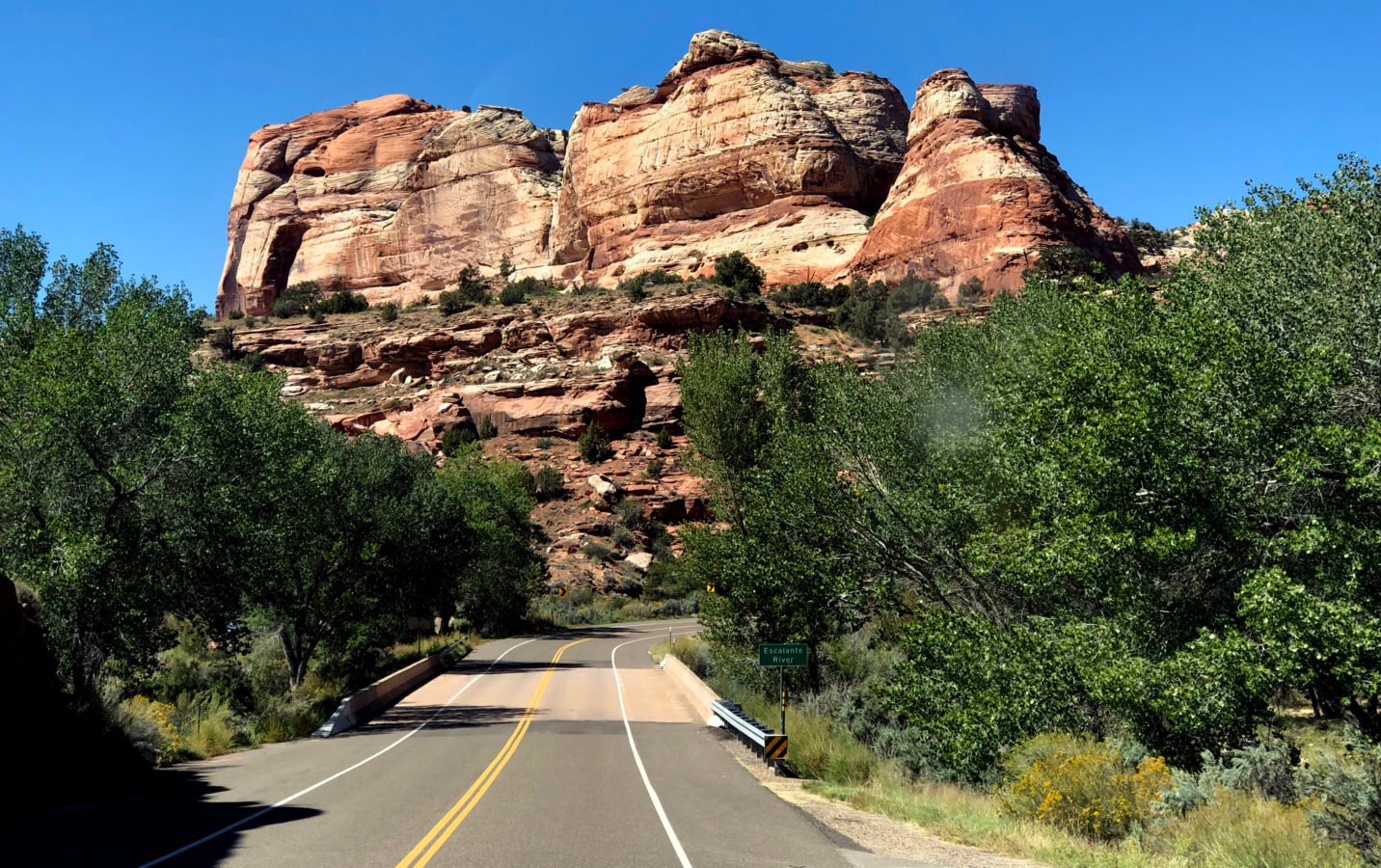
Three weeks after our visit, the Biden administration, at the urging of Indigenous tribes and conservation groups, restored the original boundaries of Grand Staircase-Escalante and Bears Ears. The welcome decision offers a happy ending for now.
The next step is to ensure that the renewed protections for these lands can be made as permanent as the 270 million years of Earth’s history embedded within them. Many national monuments established since Teddy Roosevelt began using presidential powers to create them in 1906 have become national parks established by Congress, including Death Valley, Olympic, Zion, Arches, Bryce Canyon, Joshua Tree and Acadia.
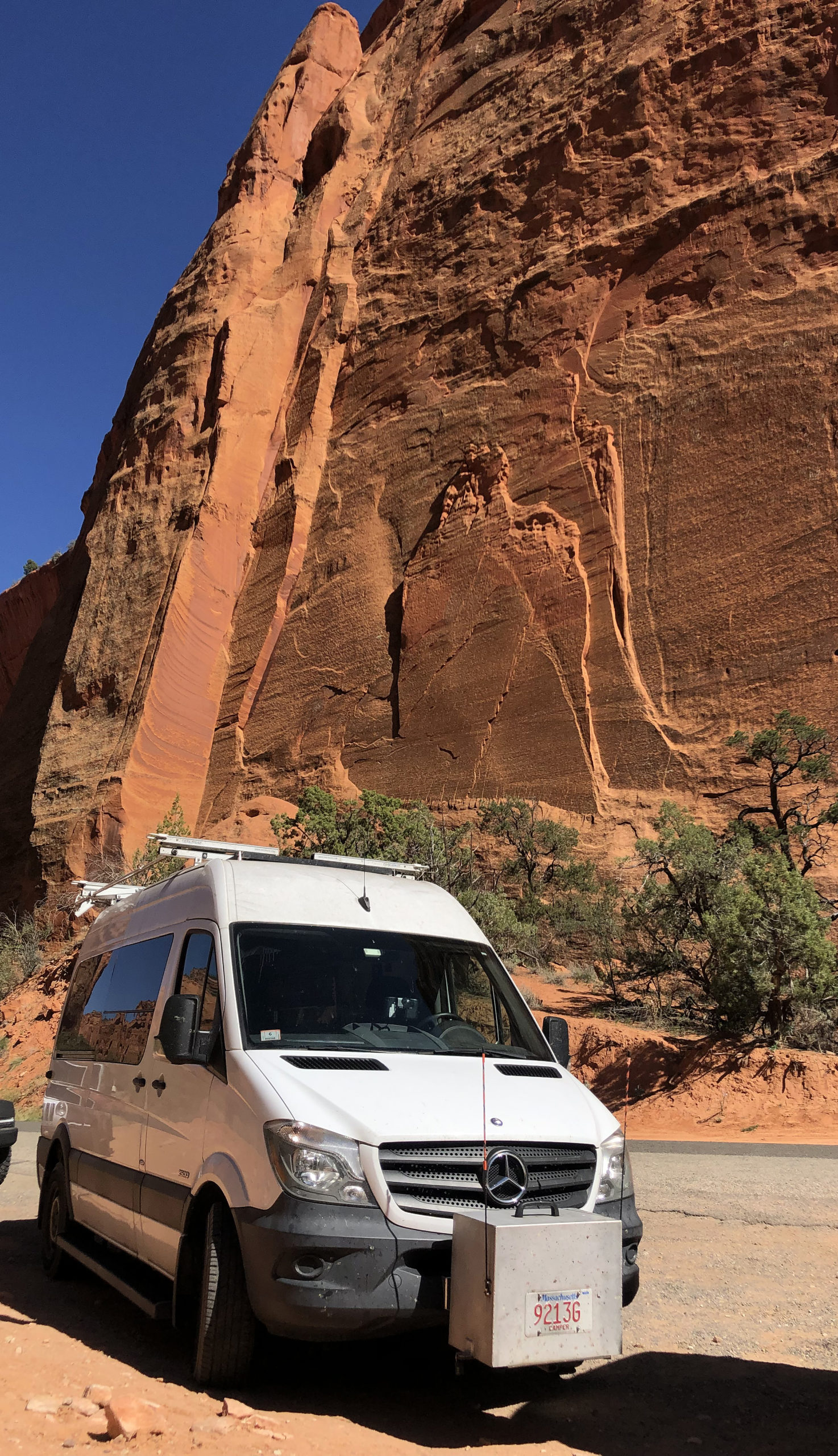
Should Grand Staircase-Escalante and Bears Ears join this spectacular club? If they did, southern Utah could be a 300-mile-long majesty of permanently protected land with few gaps, from Zion up to Arches.
But as anyone who has tried to get into Arches this year can attest, something might be lost by being elevated to park status. National monuments such as these, similar to national wildlife refuges, can offer opportunities to appreciate nature and the landscape at its grandest without hordes of people, expensive hotels and t-shirt shops.
What would be best of all is that these lands become so treasured by the public that they no longer teeter like a boulder atop a hoodoo, too easily felled by a president in the name of greed.
